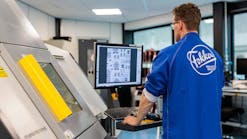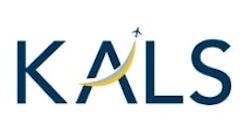A baseline definition of e-enablement:
“…the strategic connection and integration of business processes, people, airplanes, information, assets, and knowledge into a single focused business system…” (Boeing, 2006)
The aviation industry is poised for a period of unprecedented technological change, providing significant opportunities and challenges for airlines and suppliers alike. E-enablement’s connectivity solutions are able to transmit data between e-enabled aircraft and outside sources, but how is the aviation industry responding to the far-reaching implications of that connectivity?
Unprecedented Change
In this decade, the air transportation fleet will undergo rapid technological change as airlines introduce six new aircraft types with ramped up production. The rate of ramp-up and fleet rollover is important because the introduction of new technology aircraft provides airlines with the unique opportunity to reconsider the traditional way in which they previously managed their aircraft. A frequent theme heard from aircraft operators is that the e-enabled 787 and A350 can, are, and will be managed differently. Forward-thinking airlines are leveraging this opportunity to seek new and innovative maintenance, repair, and overhaul (MRO) sourcing strategies. For example, we now see airlines such as ANA, Qantas, Singapore Airlines, British Airways, and JAL outsourcing their 787, A380, or A350 component maintenance to companies like LH Technik, SR Technics, Air France Industries/KLM E&M, and now (another change happening in the MRO supply chain) Airbus.
The “accelerator” effect of incoming technologies and the resulting tsunami of available data and information that airlines and OEMs will have available to them is unprecedented. While the 767 offered up to 10,000 aircraft health management parameters, the 787 offers 100,000. Combine this dramatic increase in per aircraft data generation with the 45 percent per annum growth rate of the new technology fleet, and the MRO value chain will see a 1,100 percent increase in available data being generated. And put bluntly, the majority of operators utilize antiquated MRO IT systems that can no longer manage the data complexity. Nor do they have the skills—or necessarily the desire—to turn these data into beneficial information.
New technology aircraft will inevitably challenge the competitive landscape and balance of power in the aftermarket. As the MRO supply chain continues to become more OEM-centric, there will be a battle for access and control of operational and maintenance data. Those who have the capacity and capability (financially and technically) to leverage “Big Data” will likely benefit the most. Smaller and less sophisticated players will need to focus their energy and resources on core competencies where they can win and/or find new ways to access the opportunities available in this more e-enabled aircraft support environment.
New Technology Creates Opportunities
The data generation potential of the new technology fleet is not only limited to e-related technology impacting aircraft operations and support. Other related new developments include the cloud, Big Data analytics, Electronic Tech Log, xml, and greater electronic data interchange/automation. The impact to operators, suppliers, and investors will be profound.






